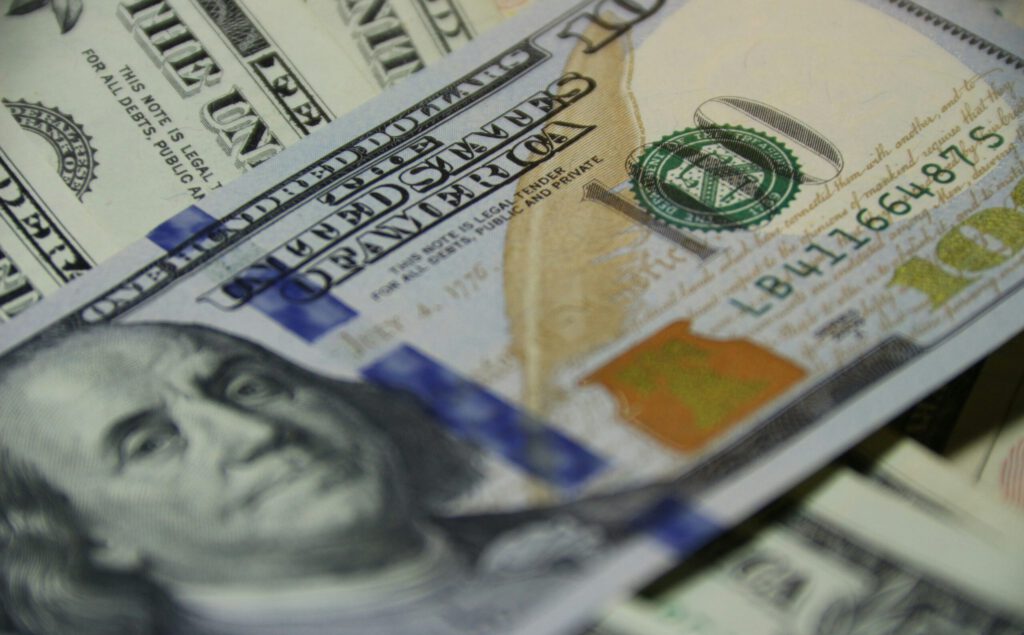
Contrary to many opinions, the dollar is and remains the world’s leading currency. Periods of weakness highlight balancing mechanisms for investors.
The death knell is currently being sounded for the currency of the United States of America.
But this is all wishful thinking, as a look at the statistics and the history of the dollar reveals.
Large gaps
The world’s reserve currency accounts for around 60 percent of global foreign exchange reserves.
The euro, the world’s next major currency, now accounts for just 20 percent. However, the inconsistent economic policy of the Europeans makes a further rise seem unlikely.
What’s more, the Japanese currency, the yen, and the pound sterling are already running a distant second to the euro as reserve currencies.
A serious (re-)upswing or general shifts in power are questionable.
Hyperbole from America’s opponents
The Chinese renminbi, Russian rouble and Brazilian real do not even come anywhere close to the world currency, the dollar.
Serious investors also regard government intervention in those countries’ money as “very high” which is a red flag for savers.
Any swan song for the flexible US currency is therefore wishful thinking on the part of opponents of the Americans and their current president, Donald Trump.
Two phases on portfolios
Dollar fears are much ado about nothing.
This is borne out not only by the figures on the size of global currency reserves, but also by a look back through history.
Currency fluctuations in the dollar generally affect portfolios in two phases, according to an analysis by Degroof Petercam Asset Management (DPAM) – an asset manager belonging to the Indosuez Wealth Management Group.
On the one hand, a weaker dollar means a lower value of assets in dollars. There is therefore a direct translation effect.
Dollar down – shares up
However, US companies that generate their profits in foreign currencies report higher profits in dollars, which leads to upward corrections in profits and potentially higher share prices.
A weakening dollar therefore has a delayed effect on corporate earnings, which leads to a natural currency hedge for investors in euros or Swiss francs.
Many S&P 500 companies such as Apple, Amazon, American Express, Coca-Cola, Dell, Expedia, GE, GM, Google, Hilton, Marriott, Merck, McDonalds, Microsoft, Pfizer, UPS & Co. generate around 40 percent of their sales outside the USA.
They create a natural hedge through their global commitment, according to DPAM.
Global corporations benefit
For example, shares reacted to historical periods in which the dollar weakened significantly:
From 1985 to the Plaza Accord to September 1987, the dollar fell almost 40 percent against other currencies. Nevertheless, the S&P 500 more than doubled over that same period. The weakness of the dollar boosted US exporters and therefore contributed to equity returns.
From 2003 to 2007, the dollar lost around 30 percent of its value against the euro. However, the S&P 500 generated a remarkable return of around 80 percent in dollar terms. However, euro investors were also able to post gains, as share price gains outweighed currency losses.
In 2017, the dollar had already fallen by around 15 percent, but the S&P 500 rose by 21 percent.
A natural hedge
In all cases, competitive export prices and the increased dollar value of foreign sales contributed to strong profits and offset the negative exchange rate effects for investors in many currencies.
These periods illustrate a recurring theme: equity markets can compensate for currency devaluations, especially when companies have a global footprint.
Counteracting deindustrialization
Figures on global currency reserves and the history of dollar crashes therefore make it clear that a perceived current swan song for the dollar is completely unfounded.
As the world’s reserve currency, the dollar is actually struggling with upward trends, and overvaluation makes exports more expensive.
Devaluations are therefore needed from time to time in order to counteract the deindustrialization of the USA and the incentive to live beyond one’s means thanks to cheap debt opportunities.
However, this does not mean any end to the dominance of the dollar. And a boom in stablecoins USDT, USDC & Co. could even strengthen the dollar’s leading role.
18.07.2025/kut./ena.





